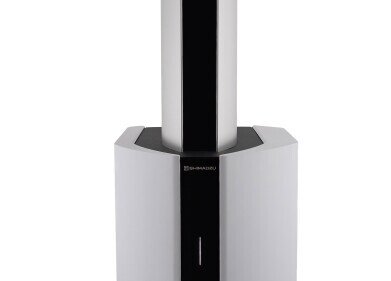Mass Spectrometry & Spectroscopy
At-Line Micronutrient Analysis Using ED-XRF Spectroscopy at the Point of Production
Jul 11 2016
The ability to conduct elemental analysis of materials close to the production line has significant advantages in improving product quality and consistency while maximising throughput. This is especially true in micronutrient analysis, where the ability to accurately determine elemental composition can be a matter of life or death.
Iron deficiency, for example, is the leading cause of death in childbirth. Zinc deficiency is linked to diarrhea, which kills nine million children a year. Micronutrient supplementation can go a long way to reversing such conditions, which is why farmers around the world are stepping up efforts to breed zinc- and iron-rich grains. As these grains find their way into infant cereals, milk-based powders, and premixes, precise monitoring of nutrient content is critical. Traditional laboratory-based quality control methods add substantial costs and delays to a process already operating with thin margins. Promising to change all of this is a new generation of high-resolution rapid screening technology that uses energy dispersive X-ray fluorescence (ED-XRF) spectroscopy in an instrument designed specifically to conduct lab-quality elemental analyses at the production line.
The need for at-line QC
In recent years, the main laboratory method for elemental analysis of plant tissue with dependable accuracy and sufficient sensitivity has been inductively coupled plasma-optical emission spectrometry (ICP-OES). Alternatively, colorimetric methods have been developed for zinc and iron analysis in grain. Though simpler to undertake than ICP-OES, these methods are only semi-quantitative, and also - when thousands of samples are to be analysed - too time-consuming.
One drawback of both ICP-OES and colorimetric methods is that they must be done in a lab. Once a sample is collected, it must be transported to the lab, where it would likely be placed in queue for ICP-OES analysis. A second drawback is that these methods require extensive sample preparation, which can add hours to the process. If the test reveals undesirable levels of zinc or iron, it will likely need to be performed again on a new sample and the cycle would be repeated, extending time to production further.
Bringing analysis to the line
ED-XRF analysis, on the other hand, is performed directly on a sample, usually with little preparation and with powerful new portable instruments that can be used anywhere in the plant. Once a sample is collected from any process point, it can be analysed rapidly and accurately right at the point of production.
Learn more by downloading the application brief At-Line Micronutrient Analysis Using ED-XRF Spectroscopy at the Point of Production.
Digital Edition
Lab Asia 31.2 April 2024
April 2024
In This Edition Chromatography Articles - Approaches to troubleshooting an SPE method for the analysis of oligonucleotides (pt i) - High-precision liquid flow processes demand full fluidic c...
View all digital editions
Events
Apr 22 2024 Marrakech, Morroco
Making Pharmaceuticals Exhibition & Conference
Apr 23 2024 Coventry, UK
Apr 23 2024 Kintex, South Korea
Apr 23 2024 Seoul, South Korea
Apr 24 2024 Jakarta, Indonesia








.jpg)









